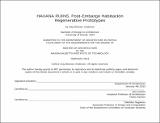| dc.contributor.advisor | Joel Lamere. | en_US |
| dc.contributor.author | Anderson, Clay Bismarc | en_US |
| dc.contributor.other | Massachusetts Institute of Technology. Department of Architecture. | en_US |
| dc.coverage.spatial | nwcu--- | en_US |
| dc.date.accessioned | 2013-06-17T19:01:17Z | |
| dc.date.available | 2013-06-17T19:01:17Z | |
| dc.date.copyright | 2013 | en_US |
| dc.date.issued | 2013 | en_US |
| dc.identifier.uri | http://hdl.handle.net/1721.1/79135 | |
| dc.description | Thesis (M. Arch.)--Massachusetts Institute of Technology, Dept. of Architecture, 2013. | en_US |
| dc.description | This electronic version was submitted by the student author. The certified thesis is available in the Institute Archives and Special Collections. | en_US |
| dc.description | Cataloged from student-submitted PDF version of thesis. | en_US |
| dc.description | Includes bibliographical references (p. 115-116). | en_US |
| dc.description.abstract | MIT American tourism influx is inevitable in the rapidly 'capitalizing' political context of Cuba. From the 1920's through the 1950's Americans were the dominate tourist on the island. Fast forward to today and Americans account for only about 5% of all visitors. But, this is all about to change. An additional one million American tourists are projected to invade Cuba within the first year the travel ban is lifted. Cuba receives around 2.5 million visitors annually, so this American influx represents a 40% increase in one year. How does a city deal with this type of boom, especially one as unique as Havana? This thesis investigates prototypes for reconstructing both Cubano and tourist habitation in Centro Habana. A combination of Marxist ideals, morbid economy and trade embargo have torn the urban fabric and bUilding stock. Ruin and decay thrive in the Caribbean Metropolis. Roughly 60% of Centro Havana's bUildings are in deplorable condition, and it is said that a bUilding collapses every 3 days. This has created a serious housing shortage as well as an opportunity for future tourism growth. Sites of decay become the vessels for prototypical exploration and thus create a new urban experience for both locals and future tourists. This prototypical approach is applied in 2 key areas, new accommodation typologies as well as experimental reuse of bUilding materials. Notions of how to inhabit the cities decay and blights translate into new typologies of hotels, hostels and micro-hotels. Excess construction debris, prolific in the city today, becomes repurposed as a new medium for material systems. This reuse of brick translates into facade, screen and surface systems that compose a new regenerative typology for Havana. | en_US |
| dc.description.statementofresponsibility | by Clay Bismarc Anderson. | en_US |
| dc.format.extent | 117 p. | en_US |
| dc.language.iso | eng | en_US |
| dc.publisher | Massachusetts Institute of Technology | en_US |
| dc.rights | M.I.T. theses are protected by
copyright. They may be viewed from this source for any purpose, but
reproduction or distribution in any format is prohibited without written
permission. See provided URL for inquiries about permission. | en_US |
| dc.rights.uri | http://dspace.mit.edu/handle/1721.1/7582 | en_US |
| dc.subject | Architecture. | en_US |
| dc.title | Havana ruins : post-embargo habitación regenerative prototypes | en_US |
| dc.type | Thesis | en_US |
| dc.description.degree | M.Arch. | en_US |
| dc.contributor.department | Massachusetts Institute of Technology. Department of Architecture | |
| dc.identifier.oclc | 844341537 | en_US |
